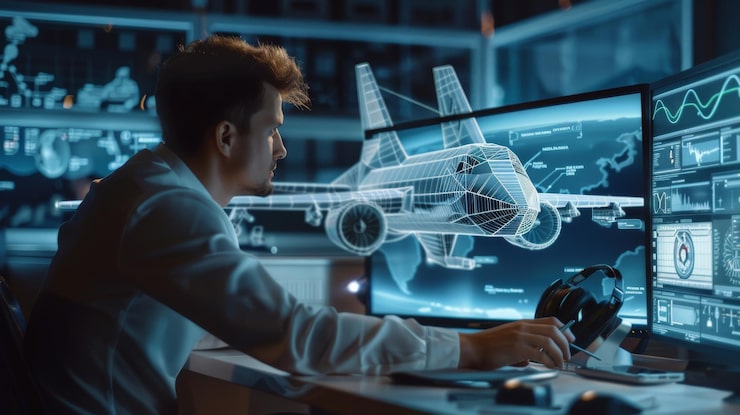In modern aerospace design, system modeling plays a vital role in ensuring precision, safety, and reliability. It allows engineers to simulate and analyze various aircraft subsystems before physical implementation. By creating digital representations of real-world processes, system modeling streamlines testing, reduces costs, and enhances performance outcomes in flight level engineering. Understanding how this process works—and its impact on flight engineering—helps us appreciate how data-driven design revolutionizes aviation.
Understanding System Modeling
System modeling involves creating mathematical and visual representations of physical systems. In flight engineering, this includes modeling aircraft control systems, propulsion mechanisms, fuel distribution, navigation, and even environmental control systems. Each model acts as a digital twin that mirrors real-world behavior under different flight conditions. Engineers can evaluate performance, detect inefficiencies, and predict system interactions long before an aircraft ever leaves the ground.
Why System Modeling Matters in Flight Engineering
The aerospace industry demands extreme precision and safety. Traditional trial-and-error methods are too costly and time-consuming. System modeling enables predictive analysis, where engineers can simulate numerous scenarios, such as turbulence response or emergency maneuvers. This ensures optimized system behavior and compliance with safety standards. It also helps in identifying potential design flaws early, minimizing development risks and expensive redesigns.
Core Components of System Modeling in Aviation
Mathematical Representation
Models are built using complex equations that define aerodynamics, structural loads, and control dynamics.
Simulation Tools
Advanced software allows engineers to visualize real-time behavior through computational models.
Feedback Integration
Sensors and data collected from test flights feed into models to improve accuracy.
Validation and Testing
Once models perform accurately under simulation, they are validated against real-world data to confirm their reliability.
Applications of System Modeling in Flight Level Engineering
System modeling supports multiple stages of flight engineering, from concept design to system verification. It helps in:
- Flight Control Optimization: Modeling ensures smooth, responsive control systems for stability and maneuverability.
- Energy Efficiency: Simulating propulsion systems helps in reducing fuel consumption and improving sustainability.
- Safety Analysis: Engineers use models to predict system failures and test emergency responses.
- System Integration: Modeling ensures that various aircraft subsystems function together harmoniously.
Role of Simulation and Testing
Simulation tools are essential for modern flight engineering. They bridge the gap between theory and practice. Engineers use these simulations to replicate real flight conditions without risking actual assets. By testing under controlled environments, they can refine parameters, enhance accuracy, and improve performance efficiency. These simulations also provide valuable data for regulatory certifications, ensuring all safety measures are validated.
Enhancing Accuracy with Digital Twin Technology
Digital twin technology brings system modeling to life by providing a dynamic, continuously updated replica of an aircraft or component. This technology uses real-time data from sensors to monitor performance during operations. The digital twin evolves as the system operates, helping engineers predict wear, schedule maintenance, and enhance overall efficiency. This advancement has redefined predictive maintenance and lifecycle management in aviation.
Mid-Stage Development: Integrating Flight Simulations
During the testing phase, engineers employ advanced simulators to evaluate modeled systems in real-time environments. A well-structured flight simulator setup allows designers to test navigation systems, control responses, and pilot interfaces with precision. It also ensures that every system behaves as expected under different weather conditions, altitudes, and mechanical stresses. Simulation-driven development not only saves time but also creates a safer, more efficient engineering process.
Challenges in System Modeling
Despite its advantages, system modeling presents challenges. Building accurate models requires deep expertise and precise data input. Inaccurate assumptions can lead to unreliable predictions. Additionally, computational complexity and software limitations may affect performance. Continuous validation, model refinement, and expert oversight are crucial to maintain model integrity.
Future Trends in Flight Engineering Modeling
Emerging technologies like AI, machine learning, and cloud computing are reshaping system modeling. These innovations allow for real-time learning, adaptive simulations, and enhanced predictive analytics. Cloud-based platforms facilitate collaboration between global engineering teams, accelerating development cycles. As aircraft become smarter and more autonomous, integrated modeling will remain at the heart of innovation.
Conclusion
System modeling has become the foundation of modern flight level engineering. It empowers engineers to design safer, more efficient, and sustainable aircraft systems by simulating performance long before real-world application. From predictive analysis to real-time testing, this approach ensures reliability and cost-effectiveness. As technology evolves, modeling will continue to refine how we design, test, and operate the aircraft of the future-elevating both performance and safety in aviation.



